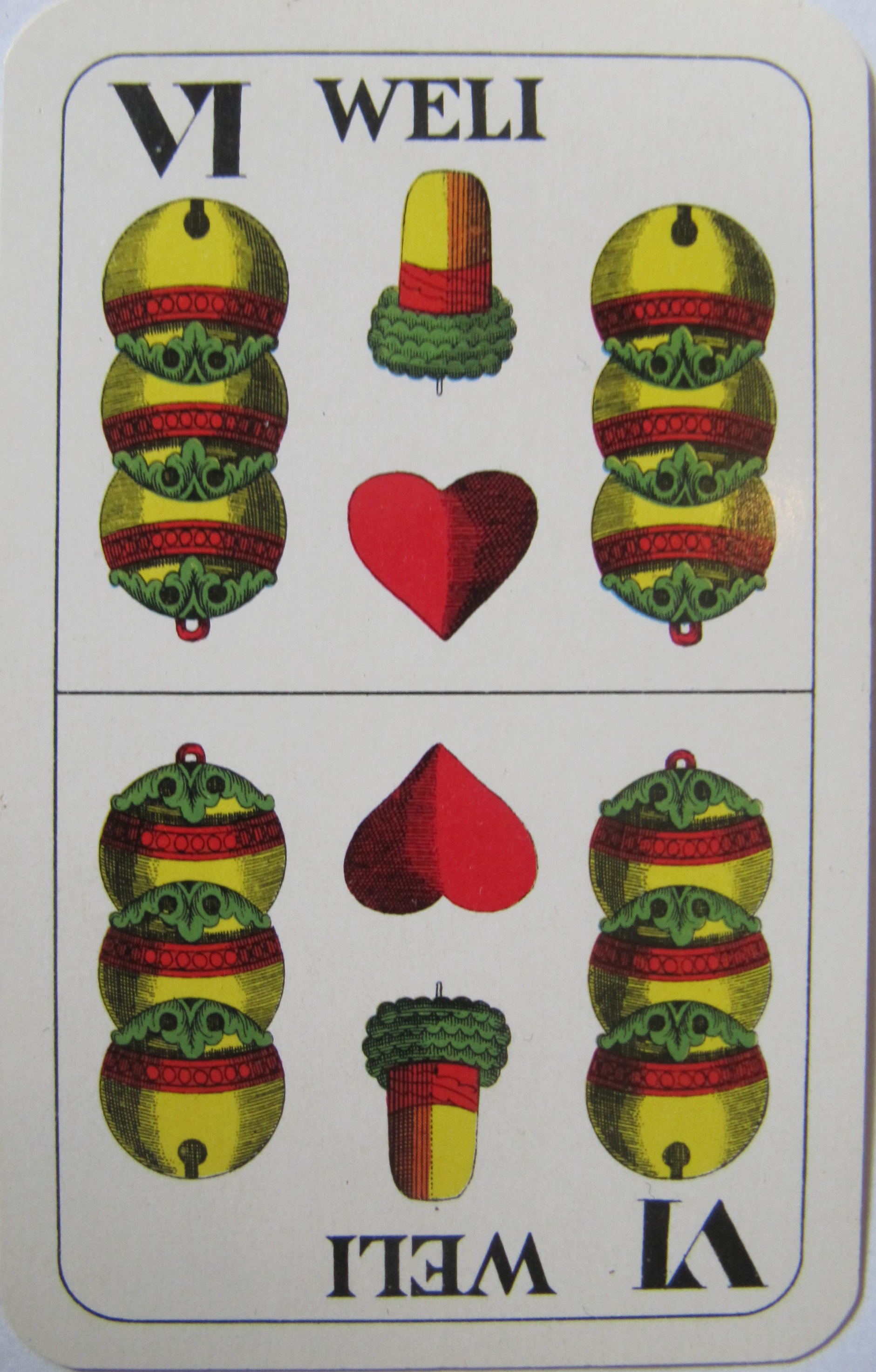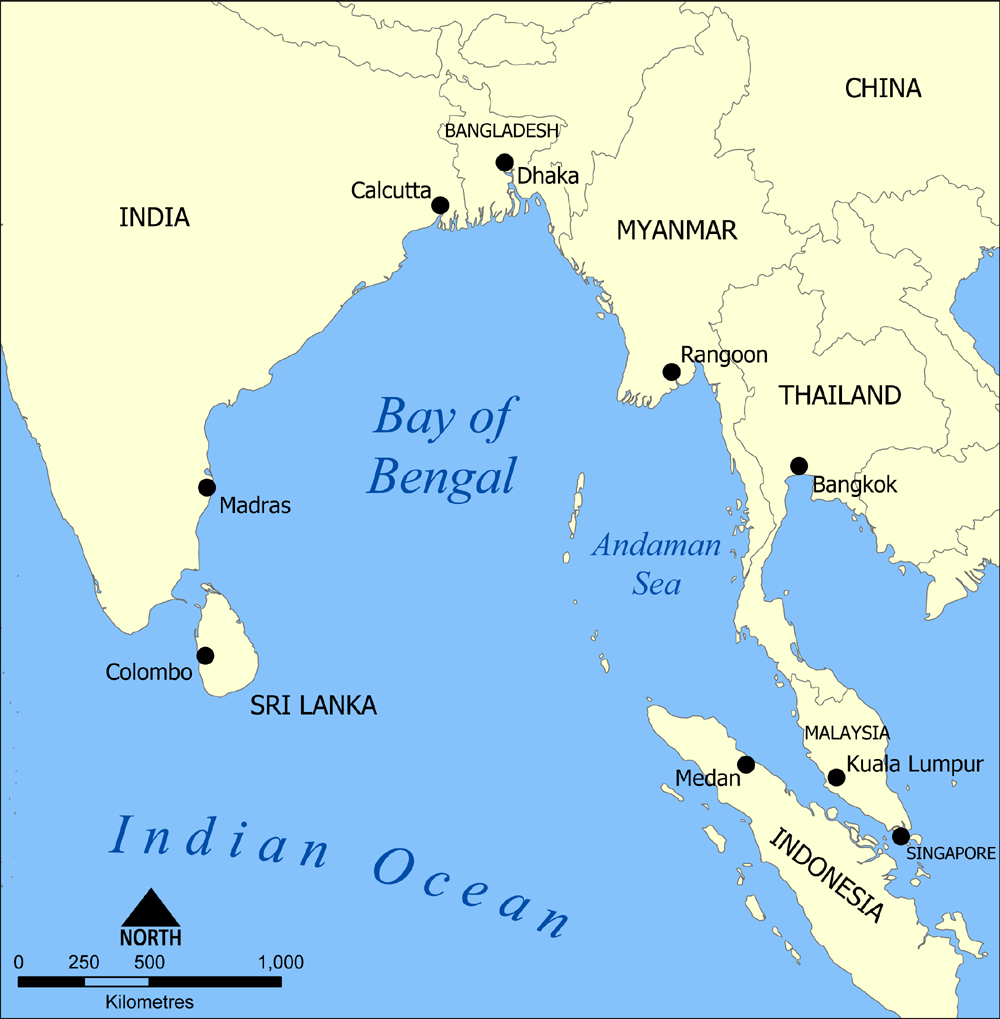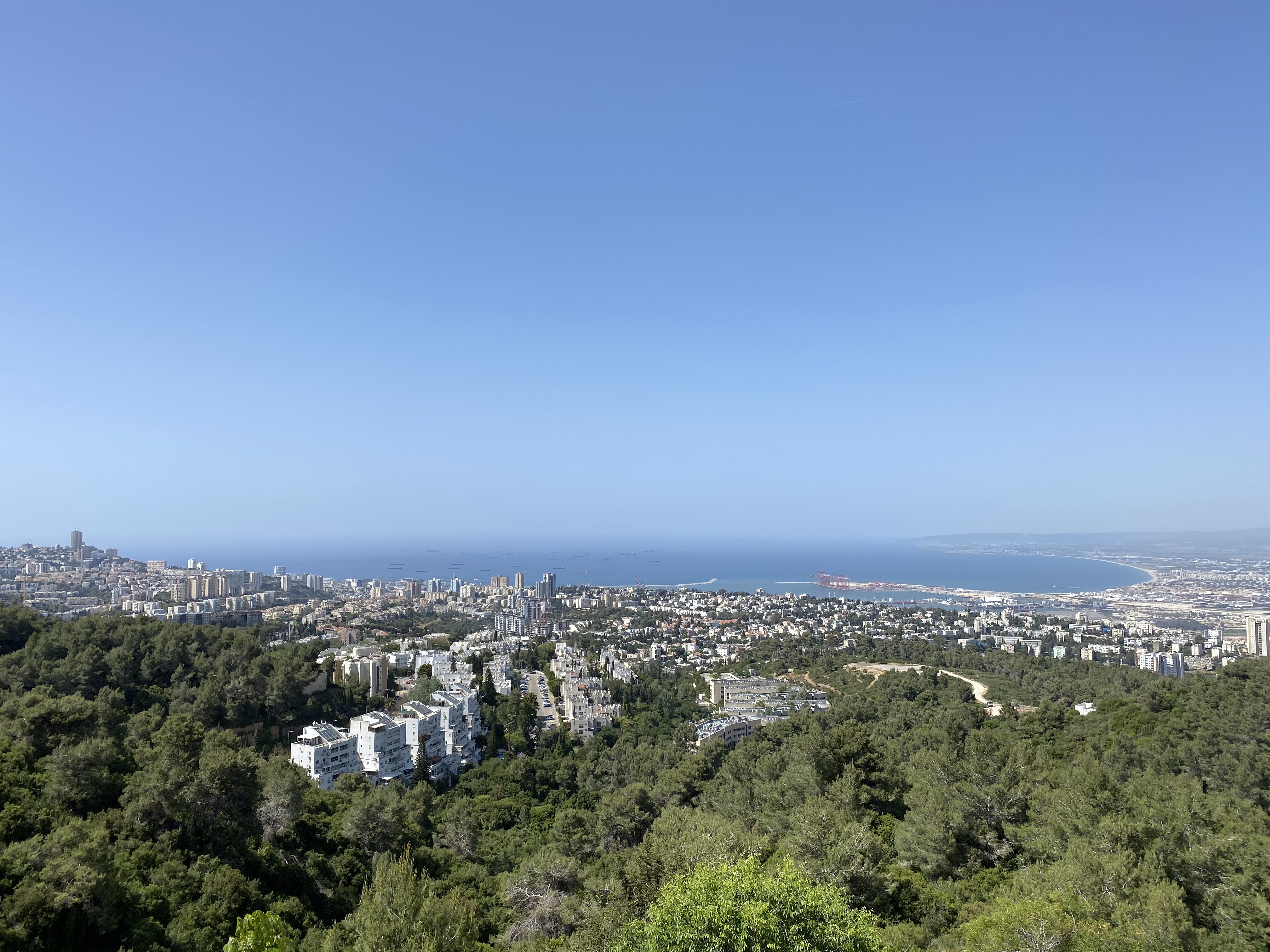|
Schnalzen
Schnalzen is an Austrian card game for 4 players and a member of the Rams group of games in which the key feature is that players may choose to drop out of the game if they believe their hand is not strong enough to take a minimum number of tricks. It is, broadly speaking, Ramsen with the '' Weli'' as the second-highest trump. Players are dealt 5 cards and may not exchange. The Weli is the second-highest trump and game is 20 points. Distribution Schnalzen is played in the Austrian states of Salzburg, Carinthia, Burgenland and the Styria. It has also gained a following in Barwedel near Brunswick in Germany, having been brought there from Austria. Rules The following rules are based on the game as played in Großgmain in Salzburg state. Aim The aim of Schnalzen is to win tricks in order to be the first to get one's score from 20 down to zero. Cards Schnalzen is played with a Double German (William Tell) pack comprising 4 suits - Acorns, Leaves, Hearts and Bells ... [...More Info...] [...Related Items...] OR: [Wikipedia] [Google] [Baidu] |
Lampeln
Lampeln or Lampln is an old Bavarian and Austrian plain-trick card game that is still played in a few places today. It is one of the Rams group of card games characterised by allowing players to drop out of the current game if they think they will be unable to win any tricks or a minimum number of tricks.''Card Games: Rams Group'' at www.pagat.com. Retrieved 16 October 2018 Background Historically, Lampeln was banned in the in 1904 as a usually played for money; this ban was confirmed by the Austrian government in 193 ...[...More Info...] [...Related Items...] OR: [Wikipedia] [Google] [Baidu] |
Mulatschak
or ("Fifteen Down") is an Austrian card game for two to five players that comes from the Salzburg area and is considered the quintessential game of the region. Although Mulatschak has been called the national card game of Salzburg, its rules were almost certainly unpublished before 2004.McLeod (2005), p. 288. Mulatschak is a member of the Rams family in which the key feature is that players may choose to drop out of the game if they believe their hand is not strong enough to take a minimum number of tricks. There is a variant known as Murln or Murlen, which is played in Vienna and the Styria. Background The word is Hungarian in origin (), meaning "merriment" or "amusement", and refers to the traditional evening drinks celebration where the glasses are hurled against the wall. The alternative name of means "fifteen down". Mulatschak is a member of the Rams family whose distinctive feature is that players may choose to opt out of a particular deal if they believe their cards ... [...More Info...] [...Related Items...] OR: [Wikipedia] [Google] [Baidu] |
Ramsen (card Game)
Ramsen or Ramsch is a traditional Bavarian plain-trick, card game for three to five players that is played with a 32-card German-suited pack and is suitable both for adults and for children. It is one of the Rams group of card games that are distinguished by allowing players to drop out if they think they will fail to win the required number of tricks. An unusual feature of Ramsen is the presence of four permanent trump cards that rank just below the Trump Sow (Ace). It should not be confused with the contract of ''Ramsch'' in games like Skat or Schafkopf, nor with the related game of Rams which is also called ''Ramsen'' in Austria, but is played with a Piquet pack, does not have permanent trumps and has a different card ranking. History Ramsen appears to be over 200 years old, there being a reference to this "rural game" being played around 1800 in Bavaria. In an 1844 south German anthology, it is one of the card games that is "fun" and in which "one does not have to think too ... [...More Info...] [...Related Items...] OR: [Wikipedia] [Google] [Baidu] |
Weli
The ''Weli'', formerly ''Welli'', is a playing card used in the Salzburg and William Tell card decks, which are Austrian regional patterns of the German-suited playing cards. It has the value of 6 of Bells and, in the South Tyrol variant of the card game, Watten, it is the only 6 used and can, in addition to its own suit of Bells, join the trump suits of Acorns, Hearts and Leaves. In all other variants of Watten, the 7 of Bells is the ''Weli''. History The ''Weli'' is also often called the ''Welli'' or ''Belli'' and, dialectically, the ''Wöli'', ''Wöüli'', ''Bölle'' or ''Belle''. The name ''Weli'' probably comes from the Italian word ''belli'', which means "bells". Historically the ''Weli'' is first recorded in the early 1850s, when a Bozen card manufacturer inscribed ''WELLI'' onto the six of bells. As early as 1855, the ''Weli'' was integrated in the Salzburg pattern as the 6 of Bells. The gravestone appearing in many depictions is probably the grave of the Apostle Pau ... [...More Info...] [...Related Items...] OR: [Wikipedia] [Google] [Baidu] |
Bay Gras
A bay is a recessed, coastal body of water that directly connects to a larger main body of water, such as an ocean, a lake, or another bay. A large bay is usually called a gulf, sea, sound, or bight. A cove is a small, circular bay with a narrow entrance. A fjord is an elongated bay formed by glacial action. A bay can be the estuary of a river, such as the Chesapeake Bay, an estuary of the Susquehanna River. Bays may also be nested within each other; for example, James Bay is an arm of Hudson Bay in northeastern Canada. Some large bays, such as the Bay of Bengal and Hudson Bay, have varied marine geology. The land surrounding a bay often reduces the strength of winds and blocks waves. Bays may have as wide a variety of shoreline characteristics as other shorelines. In some cases, bays have beaches, which "are usually characterized by a steep upper foreshore with a broad, flat fronting terrace".Maurice Schwartz, ''Encyclopedia of Coastal Science'' (2006), p. 129. Bays were sig ... [...More Info...] [...Related Items...] OR: [Wikipedia] [Google] [Baidu] |
Leaves (card Suit)
Leaves are one of the four suits in German-suited packs of playing cards. This suit was invented in 15th century Germany and is a survivor from a large pool of experimental suit signs created to replace the Latin suits. Around 1480, French card makers adapted this sign into Spades in the French pack (known as pikes in France). As its name suggests, the leaf is represented by a stylized green leaf. The left half is lighter than the right half; it can sometimes be yellow. Veins are visible and there is usually a petiole. There may also be smaller leaves. They are usually known in German as ''Laub'' ("foliage"), but also as ''Gras'' ("grass"), ''Blatt'' ("leaf") or ''Grün'' ("green"). Cards are referred to as in a French pack e.g. the "King of Leaves", but in German as ''"Laub-König"'' or ''"Grün-König"'' i.e. "Leaf King". It is the second-highest suit in the games of Skat, Schafkopf and Doppelkopf, and the second lowest in Préférence. The gallery below shows a suit of ... [...More Info...] [...Related Items...] OR: [Wikipedia] [Google] [Baidu] |
Hearts (card Suit)
Hearts (french: Cœur, german: Herz) is one of the four suits in playing cards of both the French deck and the German deck. However, the symbol is slightly different: in a French deck and in a German-suited deck. In Bridge, for which in Germany the French deck is common, it is called by its French name, ''Cœur''. In games using German-suited cards the suit of Hearts is often called "Red" (''Rot''). In the game of Watten, the King of Hearts is the highest Trump. This suit was invented in 15th century Germany and is a survivor from a large pool of experimental suit signs created to replace the Latin suits. Name The origin of the term "heart" to describe the symbol, which only very marginally resembles a true heart, is not known. In general, equivalents in other languages also mean "heart". File:Bay herz.svg, The heart in German suited cards File:Naipe copas.png, The heart in French suited cards Characteristics The heart typically has a form of cardioid, the lower par ... [...More Info...] [...Related Items...] OR: [Wikipedia] [Google] [Baidu] |
Bells (card Suit)
Bells are a suit in playing cards of the Swiss-suited and German-suited cards. Unlike the other German suits, this suit was not adapted by French card makers. In its place, there was initially a suit of red crescents until the suit of Diamonds was added to the French pack (known as tiles in France). The suit is usually known in German as ''Schellen'', but is sometimes abbreviated to ''Schell''. Cards are referred to as in a French deck e.g. the "9 of Bells", but in German as ''"Schellen 9"'', or the "Unter of Bells" (''Schellunter'' or ''Schell-Unter''). Bells are the lowest suit in Skat, Schafkopf and Doppelkopf, but the second highest in Préférence. The 7 of Bells (''Schellen 7'') or, in South Tyrol the 6 of Bells (''Belle, Weli'') is the second highest trump card in the game of Watten. The gallery below shows a suit of Bells from a German suited pack of 32 cards, plus the ''Weli'' or 6 of Bells which is used in some games as an 'honour' card. The main pack is of the Saxon ... [...More Info...] [...Related Items...] OR: [Wikipedia] [Google] [Baidu] |
Bay Eichel
A bay is a recessed, coastal body of water that directly connects to a larger main body of water, such as an ocean, a lake, or another bay. A large bay is usually called a gulf, sea, sound, or bight. A cove is a small, circular bay with a narrow entrance. A fjord is an elongated bay formed by glacial action. A bay can be the estuary of a river, such as the Chesapeake Bay, an estuary of the Susquehanna River. Bays may also be nested within each other; for example, James Bay is an arm of Hudson Bay in northeastern Canada. Some large bays, such as the Bay of Bengal and Hudson Bay, have varied marine geology. The land surrounding a bay often reduces the strength of winds and blocks waves. Bays may have as wide a variety of shoreline characteristics as other shorelines. In some cases, bays have beaches, which "are usually characterized by a steep upper foreshore with a broad, flat fronting terrace".Maurice Schwartz, ''Encyclopedia of Coastal Science'' (2006), p. 129. Bays were sig ... [...More Info...] [...Related Items...] OR: [Wikipedia] [Google] [Baidu] |
Double German Pack
German-suited playing cards are a very common style of traditional playing card used in many parts of Central Europe characterised by 32- or 36-card packs with the suits of Acorns (''Eichel'' or ''Kreuz''), Leaves (''Grün'', ''Blatt'', ''Laub'', ''Pik'' or ''Gras''), Hearts (''Herz'' or ''Rot'') and Bells (''Schelle'', ''Schell'' or ''Bolle''). The German suit system is one of the oldest, becoming standard around 1450 and, a few decades later, influencing the design of the now international French suit system of Clubs, Spades, Hearts and Diamonds. Today German-suited playing cards are common in south and east Germany, Austria, German-speaking Switzerland, Liechtenstein, north Italy, Hungary, Czech Republic, Slovakia, Slovenia, Croatia, Bosnia, northern Serbia (Vojvodina province) and central and western Romania. History Playing cards (''Spielkarten'') originally entered German-speaking lands around the late 1370s. The earliest cards were probably Latin-suited like those us ... [...More Info...] [...Related Items...] OR: [Wikipedia] [Google] [Baidu] |
Bay Herz
A bay is a recessed, coastal body of water that directly connects to a larger main body of water, such as an ocean, a lake, or another bay. A large bay is usually called a gulf, sea, sound, or bight. A cove is a small, circular bay with a narrow entrance. A fjord is an elongated bay formed by glacial action. A bay can be the estuary of a river, such as the Chesapeake Bay, an estuary of the Susquehanna River. Bays may also be nested within each other; for example, James Bay is an arm of Hudson Bay in northeastern Canada. Some large bays, such as the Bay of Bengal and Hudson Bay, have varied marine geology. The land surrounding a bay often reduces the strength of winds and blocks waves. Bays may have as wide a variety of shoreline characteristics as other shorelines. In some cases, bays have beaches, which "are usually characterized by a steep upper foreshore with a broad, flat fronting terrace".Maurice Schwartz, ''Encyclopedia of Coastal Science'' (2006), p. 129. Bays were sig ... [...More Info...] [...Related Items...] OR: [Wikipedia] [Google] [Baidu] |
Bay Schellen
A bay is a recessed, coastal body of water that directly connects to a larger main body of water, such as an ocean, a lake, or another bay. A large bay is usually called a gulf, sea, sound, or bight. A cove is a small, circular bay with a narrow entrance. A fjord is an elongated bay formed by glacial action. A bay can be the estuary of a river, such as the Chesapeake Bay, an estuary of the Susquehanna River. Bays may also be nested within each other; for example, James Bay is an arm of Hudson Bay in northeastern Canada. Some large bays, such as the Bay of Bengal and Hudson Bay, have varied marine geology. The land surrounding a bay often reduces the strength of winds and blocks waves. Bays may have as wide a variety of shoreline characteristics as other shorelines. In some cases, bays have beaches, which "are usually characterized by a steep upper foreshore with a broad, flat fronting terrace".Maurice Schwartz, ''Encyclopedia of Coastal Science'' (2006), p. 129. Bays were sig ... [...More Info...] [...Related Items...] OR: [Wikipedia] [Google] [Baidu] |









